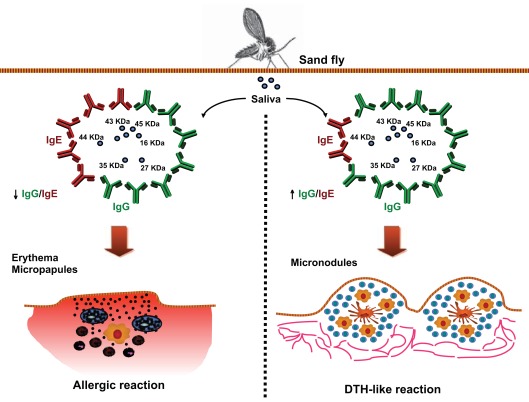Figure 1.
Associations between the pattern of host humoral responses against saliva from L. longipalpis and skin reactions upon exposure to bites. Human anti-saliva responses following exposure to uninfected L. longipalpis sand flies, using an in vivo model in which normal volunteers were exposed four times to 30 laboratory-reared Lutzomyia longipalpis (Vinhas et al., 2007). Following third exposure, volunteers developed diverse dermatological reactions at the site of insect bite. Serum from volunteers displayed high levels of IgG1, IgG4, and IgE anti-saliva and recognized several salivary gland proteins. Interestingly, volunteers who developed immediate skin reactions (left panel) presented higher IgE levels and lower IgG levels than those with delayed skin responses (right panel), as demonstrated by the IgG/IgE ratio. Whether this variability in the host responses against saliva is associated with different degree of susceptibility to Leishmania infection is still unknown.

